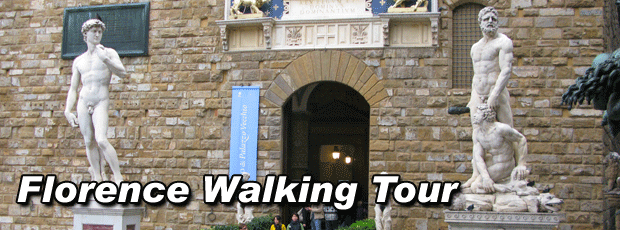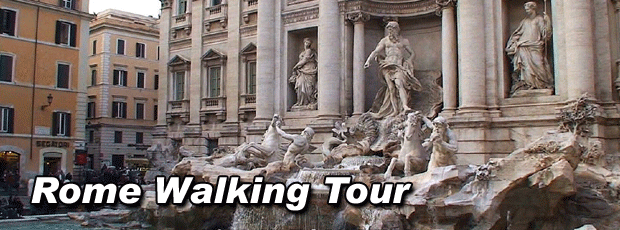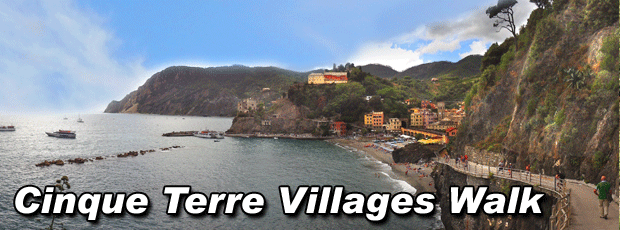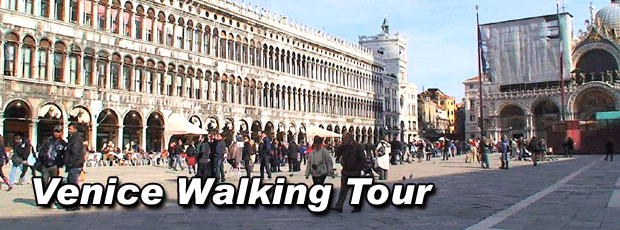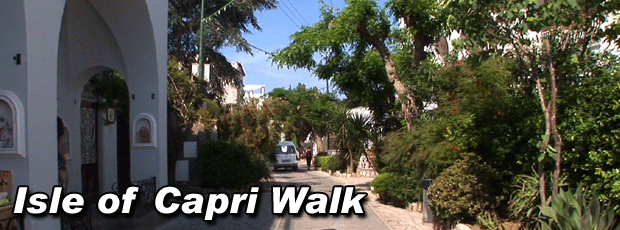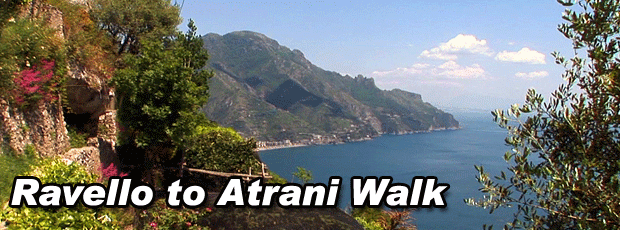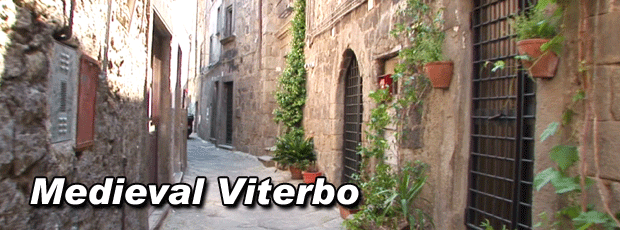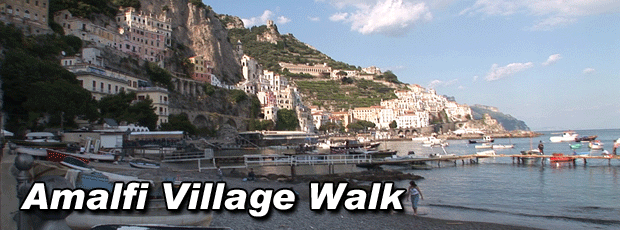-
Take a 60 minute Treadmill Virtual Walking Tour in beautiful, historic Florence, Italy - the birthplace of the Renaissance.
Click on photo at left to watch clips from this video. DVD $14.99 - Download $6.99
-
Take a 60 minute Treadmill Virtual Walking Tour to five of the most famous sites in Rome, the Eternal City. It's the next best thing to "being there."
Click on photo at left to watch clips from this video. DVD $14.99 - Download $6.99
-
Take a 60 minute Treadmill Virtual Walk in the five timeless villages that make up Italy's Cinque Terre, a UNESCO World Heritage site, and made famous by PBS Travel Guru Rick Steves.
Click on photo at left to watch clips from this video. DVD $14.99 - Download $6.99
-
In all the world there is only one Venice! And this Treadmill Virtual Walking Tour of Venice is as close as you can get to actually being in this incredible city without boarding an airplane.
Click on photo at left to watch clips from this video. DVD $14.99 - Download $6.99
-
Take a 50 minute Treadmill Virtual Walk beginning in Anacapri, atop the famous Isle of Capri, and after walking through the village, the stone path narrows and begins to hug the side of the cliff, with the blue Mediterranean Sea stretching out below you.
Click on photo at left to watch clips from this video. DVD $14.99 - Download $6.99
-
Take a 51 minute breathtaking Treadmill Virtual Walk on your treadmill from Italy's village of Ravello down to the town of Atrani on the Amalfi Coast and through some of the most beautiful scenery ever!
Click on photo at left to watch clips from this video. DVD $14.99 - Download $6.99
-
This 57 minute Treadmill Virtual Walk is in historic medieval Viterbo, Italy, a city frozen in time, still much like it was in the 13th century. Home of the pope for two decades in the 1200's, the city is essentially unchanged for eight centuries.
Click on photo at left to watch clips from this video. DVD $14.99 - Download $6.99
-
Take a 30 minute Treadmill Virtual Walk beginning high in the Valle dei Mulini, the famous "Valley of the Paper Mills," and walks down the winding path to and through the village of Amalfi, ending at a Mediterranean beach.
Click on photo at left to watch clips from this video. DVD $12.99 - Download $6.99
Your treadmill can transport you to Rome, Venice, Florence, the Amalfi Coast, or even the Isle of Capri!
If you love Italy, its history, its scenery, and its food, then you'll love taking a virtual walk through many beautiful and historic locations in Italy, such as:
ROME:
Where you'll explore the Ancient Roman Forum which was the center of day-to-day life in Rome and where many of the oldest and most important structures of the ancient city were located, you'll walk up to the Arch of Septimius Severus, dedicated in AD 203 to commemorate the Parthian victories of Emperor Septimius Severus and his two sons, Caracalla and Geta, in the two campaigns against the Parthians of 194/195 and 197–199. You'll walk past the Temple of Saturn whose pediment and eight surviving columns represent one of the iconic images of Rome's ancient architectural heritage. You'll pass the Temple of Vespasian and Titus, constructed to honor the Flavian Dynasty, which comprised the emperors Vespasian (69-79), Titus (79-81), and Domitian (81-96).
You'll walk on the Palatine Hill, the centremost of the Seven Hills of Rome and is one of the most ancient parts of the city. It stands 40 metres above the Roman Forum, looking down upon it on one side, and upon the Circus Maximus on the other. From the time of Augustus Imperial palaces were built here. and enter the Domus Augustana, part of the vast palatial complex constructed by the Emperor Domitian. You'll walk through Piazza Navona, which was built on the site of the Stadium of Domitian, built in the 1st century AD, and which follows the form of the open space of the stadium. The ancient Romans went there to watch the agones ("games"), and hence it was known as "Circus Agonalis" ("competition arena"). It is believed that over time the name changed to navone and eventually to navona.
The fountains at each end of the Piazza were sculpted by Giacomo della Porta in 1575. You'll stop to admire the incredible Fontana dei Quattro Fiumi or Fountain of the Four Rivers by Gian Lorenzo Bernini. The base of the fountain is a basin from the centre of which travertine rocks rise to support four river gods and above them, an ancient Egyptian obelisk surmounted with the Pamphili family emblem of a dove with an olive twig. Collectively, they represent four major rivers of the four continents through which papal authority had spread: the Nile representing Africa, the Danube representing Europe, the Ganges representing Asia, and the Río de la Plata representing the Americas.
You'll walk through the Piazza della Rotunda and actually enter the Pantheon, one of the best-preserved of all Ancient Roman buildings, and pass through its massive doorway. You'll look up to admire the Pantheon's dome which, 2,000 years later, is still the world's largest unreinforced concrete dome. You'll walk to and stop and admire the famous Trevi Fountain, the largest Baroque fountain in the city and one of the most famous fountains in the world. Lastly, you'll enter the incredible Coliseum, originally known as the Flavian Amphitheatre. Built of travertine, tuff, and brick-faced concrete, it is the largest amphitheatre ever built. Construction began under the emperor Vespasian in AD 72, and was completed in AD 80 under his successor and heir Titus. The Colosseum could hold, it is estimated, between 50,000 and 80,000 spectators, having an average audience of some 65,000; it was used for gladiatorial contests and public spectacles such as mock sea battles. You'll completely explore the upper and lower levels of the ancient structure before your one hour virtual walking tour ends.
VENICE:
Where you'll begin atop the Ponte degli Scalzi, with a view of the Grand Canal directly ahead and the train station to the right, you'll cross the Ponte de la Pieta, a small bridge which is a favorite of local artists painting a view of the Rio de la Pieta, you'll pause briefly to take a glimpse of Rio de la Ca' en Duo from the bridge before continuing on the Calle de la Grana and then through one of Venice's narrowest alleyways which parallels the Calle Scudi, you'll enter the Campo de L'Arsenale and pass by a large stone lion before climbing the Ponte de L'Arsenale del Paradiso, and turning to view the front of the Arsenale, a complex of former shipyards and armories.
You'll enter the Viale Giuseppe Garibaldi, one of Venice's surprising small green parks and then turn right onto the Riva dei Sette Martiri (Bank of the Seven Martyrs), which runs along part of the San Marco basin, you'll continue on to the Dorsoduro district, we walk along the Fondamenta Zattere past S. Maria del Rosario and Chiesa di Santa Maria della Visitazione before turning right onto Fondamenta Nani beside Rio de S. Trovaso, passing the Squero di San Trovaso, a 17th century gondola boatyard still in use today. So much beauty everywhere... it's not surprising that Venice was once the home of playwright and famous lover Giacomo Casanova, the explorer Marco Polo, and composer Antonio Vivaldi.
You'll continue on along the Grand Canal and more sidewalk cafes and pause to admire the Rialto Bridge before crossing it, and dodging some tourists, we turn into the long arcade along the north side of Piazza San Marco, the buildings on this side are known as the Procuratie Vecchie and today house upscale shops and restaurants. Then turning into Piazza San Marco, you see for the first time the famous square, reputedly called by Napoleon "the finest drawing room of Europe." Then on towards St. Mark's basilica, one of the best known examples of Italo-Byzantine architecture in the world and famous for its gold mosaics. Then past the Doge's Palace, built in the Venetian Gothic style, and one of the main landmarks of the city of Venice.
ISLE OF CAPRI:
Beginning in the picturesque town of Anacapri, set atop the Isle of Capri, you'll walk along a small street lined with shops and intimate sidewalk cafes. Passing more shops and sidewalk cafes, you enter an area reached by few tourists and pass into a piazza and pass Santa Sofia, the main church of Anacapri.
You are in the residential section of Anacapri, where the locals reside in the midst of charming homes and streets - sun-washed white walls, Bougainvillea in bloom, winding pathways and a solitude and tranquility that is rare in today's world. From time to time, you do have to share the narrow street with motor scooters and small cars.
Now, your pathway hugs the side of the island, with the blue Mediterranean Sea below and some of the most spectacular scenery awaits you along the pathway ahead. Entering and passing through a small green forest, you discover an ancient turreted tower guarding the cliff and the remains of the summer home of Roman Emperor Tiberius.
FLORENCE: Starting in Piazzale Michelangelo, with its breathtaking view of the city of Florence and the Arno, you walk down the beautiful tree-lined stone slope beside the Viale Giuseppe Poggi, and pass through the Porta San Miniato, built in 1320, and a part of the city walls of Florence, and across the Ponte alle Grazie where you turn and pause to take in the view of the Arno River and the Ponte Vecchio in the distance. You'll walk along the Via de' Cerretani and stop to view the Duomo of Florence and Brunelleschi's famous dome. Walking on, you'll pause to admire the Baptistry and the famous Gates of Paradise, by Lorenzo Ghiberti. You'll walk down the Via dei Servi until you encounter the Basilica della Santissima Annunziata, a Renaissance-style basilica whose construction was begun in 1469 and completed in 1481. You'll enter the Piazza della Repubblica where the street market has typical Italian cheeses, meats, and other local foods for sale. You'll walk to the Piazza della Signoria, the focal point of the city of Florence where you take a short visit into the Loggia dei Lanzi, an open-air sculpture gallery of antique and Renaissance art. After pausing to admire some of the Renaissance sculpture, you leave the Loggia dei Lanzi and walk over and into the Palazzo Vecchio where we pause to admire the First Courtyard with its intricately painted ceiling vaults and the Putto with you walk over to the famous Fountain of Neptune by Bartolomeo Ammannati before turning and walking through the Piazzale degli Uffizi and past the famous Uffizi Gallery, one of the most you pause to view the Arno River and the Ponte Vecchio where you take a quick look at the Florentine gold jewelry on display. After walking across the Ponte Vecchio, you turn left and follow the Arno River eastward a short distance before entering the expansive Piazza di Santa Croce and its famous Basilica di Santa Croce, the principal Franciscan church in Florence which contains the tombs of Machiavelli, Michelangelo and Galileo.
CINQUE TERRE:
Made famous by world traveler Rick Steves, Cinque Terre ("Five Lands") are five beautiful Italian Rivera hillside villages. Your 60 minute Cinque Terre Virtual Villages Walk begins high on a cliff walkway directly south of the small village of Riomaggiore, the first of the five villages that define the Cinque Terre. After you descend the stone stairs, you turn to see the families enjoying a delightful September afternoon, then turn northward towards the village which is nestled in a narrow valley.
Fishermen store their boats the only place they can - in the narrow street that runs through the center of Riomaggiore. After climbing stairs we enter Via Colombo, Riomaggiore's beautiful primary street and it's an uphill climb but quite scenic as your path first gets narrower then widens as you pass the Church of San Giovanni Battista of Riomaggiore. Now you are high above the sea but still in the village of Riomaggiore and you pass an amazing mural painted on the side of steps before continuing on through more typical Italian scenery. As you leave Riomaggorie, you look northward towards the next Cinque Terre village Manarola.
This time, for ease of filming, you're walking southward to enter the village. Following the steeply terraced vineyard path which winds around the side of the mountain, you get excellent views of Manarola - but watch your step, the walkway is treacherous. This is a popular path with the serious hikers and your path curves eastward, towards the main entrance to the village. Your path approaches, then passes the Church of Nativity of the Virgin Mary which dates back to 1338. Manarola is the second smallest of the famous Cinque Terre towns. The closer to the waterfront we get, the more crowded with tourists Manarola becomes.
Manarola's primary industries have traditionally been fishing and wine-making, but today tourism is number one in the summer months. Before moving on to the next village, you pause to admire the busy harbor. Your walk in Corniglia, the third of the five villages, begins at a terrace overlooking the sea. Unlike the other villages, Corniglia is not directly next to the sea, but located about 100 meters above it and even from the terrace overlook, it's still mostly uphill through some attractive streets and alleyways, then up some stairs and turn the corner through more narrow walkways and you find yourself walking in more steeply terraced vineyards.
This segment of your walk ends with a view down to Corniglia's train station, but in order to reach it, hikers have a choice of 383 steps down or a 3 mile winding road. Your first view of Vernazza, the fourth of the five villages, which remains one of the true "fishing villages" on the Italian Riviera is reached after following another winding mountainside trail and you enter Vernazza through a narrow alleyway. Today, as you would expect, the main source of revenue for Vernazza is tourism however, fishing, wine and olive oil production still continue to be an important source of income for the village. On 25 October 2011, Vernazza was struck by torrential rains, massive flooding, and mudslides that left the town buried in over 4 metres of mud and debris, causing over 100 million euro worth of damage. Fortunately, the destruction to the hillside village has been repaired.
Monterosso al Mare, the fifth and final village that makes up the Cinque Terre, lies ahead. Actually, "Old Town" is ahead while "New Town" lies hidden behind a rocky promontory. One of the easiest and most scenic sections of your walk lies ahead - and it's almost all downhill. As we enter "Old Town," the walkway gets wider. and a train rushes by. One of two ways to get to "New Town" is up a steep walkway that takes you around the rocky promontory, then it's downhill with the "New Town" in the distance. Monterosso al Mare possesses the only extensive sandy beach in the Cinque Terre. The largest by far of the five villages, Monterosso al Mare actually has a street wide enough for cars and certainly has some beautiful scenery. After walking through Monterosso al Mare's "Old Town" and "New Town," your one hour Cinque Terre Villages Virtual Walk ends on the beach.
RAVELLO:
The first part of your 51 minute walk begins in Ravello's Piazza del Duomo, which features a thirteenth century campanile. After crossing the piazza, and dodging a young Italian on a scooter, a little terrier is waiting to guide you on the first part of your walk. Your four-legged tour guide obviously knows his way around Ravello and is used to bounding up the stone steps. As the terrier runs ahead, you continue up the seemingly endless steps, passing residents and hikers as they stop to admire the villas along the way.
The village of Ravello dates back to the ninth century and was once called Rebellum since it rebelled against its larger rival, Amalfi. The Ravello to Atrani walk offers the chance to admire architectural elements warmed by the Mediterranean sunshine. The village of Ravello is located in the province of Salerno, in the region of Italy known as Campania. The stone steps and pathways no doubt made commerce and communication easier as far back as the Middle Ages. And from time to time along the trail, you pass through thickets of olive trees, freesias and cistus in the springtime.
The wild flowers you will pass along this ancient pathway are surprisingly varied: white heather, spurge, squill, mint, and valerian - to name but a few. Every part of this walk offers a chance to commune with nature in one of the most breathtaking regions of Italy, the Amalfi Coast, with its sun-washed stone walls, cats resting in the shade, and a solitude and tranquility so rare in today's world.
The village of Ravello - as all communities along la Costiera Amalfitana - face towards the Tyhrrenian Sea and below lies the town of Atrani with its campanile where so much beauty awaits in Atrani that photographers love it. Fortunately, this serene little town is also overlooked by the hoards of tourists who are just a few miles away in nearby Amalfi. To reach Atrani from Ravello, you must descend countless steps on your journey but pause, from time to time, to enjoy the spectacular views. Entering Atrani, you pause for a moment at a shrine to Italy's beloved Padre Pio before continuing on deeper into enchanting Atrani. You enter into Piazza Umberto with its welcoming fountain and outdoor cafe. Your walk ends at a peaceful sandy beach - you have descended 1200 feet in 51 minutes and have memories destined to remain with you for years.
VITERBO:
Your 57 minute Florence Walking Tour begins in Piazza della Morte, with its mid 13th century Fontana San Tommaso, built around the mid 13th century. Its original name was St. Tommaso after the monastery nearby. Over the centuries the monastery’s name was changed to the Compagnia della Morte for the confraternity whose job it was to bury the abandoned dead. You turn, and walk along the Via San Lorenzo towards Piazza San Lorenzo with its Viterbo Cathedral, the seat of the Bishop of Viterbo and is dedicated to Saint Lawrence. The church is an imposing Romanesque structure situated high on the hill which the city climbs, but it lacks much of the spectacular decoration with which it was originally adorned, thanks to an ill-advised sixteenth-century reconstruction.
Next to the cathedral is the Papal Palace which was removed to Viterbo in 1257 by Alexander IV, due to the hostility of the Roman commune and constant urban violence: the former bishop's palace of Viterbo was enlarged to provide the Popes with an adequate residence. The construction, commissioned by the Capitano del popolo, Raniero Gatti, provided a great audience hall communicating with a loggia raised on a barrel vault above the city street. It was completed probably around 1266. The massive façade, facing the central piazza San Lorenzo which is dominated by the Duomo, is approached by a wide staircase completed in 1267. The top of the palace walls is decorated with square merlons. On the right is a wide roofless loggia with a seven-bay arcade, supported by slender doubled columns and decorated with crests and reliefs. Within the loggia is a 15th-century fountain, made with material of various ages, sporting the coat of arms of the Gatti family. Viterbo remained the papal seat for twenty-four years, from 1257 to 1281.
Climbing the stairs, you pause to view a papal fountain and the scene from the papal terrace. Turning, you exit the piazza and walk back towards the Piazza della Morte where you turn left and follow the acient Via dei Pellegrini. From then on, you follow a maze of 13th century narrow streets and alleyways each one with its own unique charm and beauty. Sometimes your walk takes you through short medieval tunnels and sometimes, you stumble upon a scene so incredible that it would make a beautiful painting. The streets are empty during Italy's mid-afternoon siesta and shops are closed and the Italians are home for several hours during the hottest part of the day. Unfortunately, some of the wider streets are lined with cars which spoils some of your views of the medieval buildings.
Fortunately, many of the streets and alleyways are empty - or neary emply while a few narrow alleyways have motorcycles or Vespas. As you wander through these streets and hear snippets of Italians' conversations from inside their open windows and you wonder at the centuries of conversations that have echoed through these streets and what noblemen and women once climbed these stairs or walked these streets.
You, like a typical tourist, pause to admire old doors to an ancient church. Next, you find yourself on the outside of the enormous wall around the medieval city and re-enter the city through the Porta Romana, the main entrance through the walled section of Viterbo. At its top is a statue of St. Rosa, the patron of the city along with the coat of arms of Pope Clemente XI and Pope Innocent X, who went to Viterbo for the marriage of his brother Panfilo to Olimpia Maidalchini. The old door was originally named Porta Pamphilia because it was inaugurated in 1643 when Pope Innocent X came to visit his sister-in-law Olimpia Pamphili. The gate is now called Romana because it is on the road to Rome. The wooden doors that are still present were built by Francesco Minestrone of Vetralla.
After pausing to admire several more of Viterbo's fountains, each one different from the last, your 57 minute Medieval Viterbo Virtual Walk ends at the Fontana Grande, the largest of the city’s spindle or “fuso” fountains, it dates from the 13th century and was built on the site of an earlier fountain. It is considered Viterbo’s most beautiful fountain thanks to its size and numerous lion head spouts gurgling water.
AMALFI:
Your 30 minute Village of Amalfi Virtual Walk begins high above the village in the Valle dei Mulini, the famous "Valley of the Paper Mills" overlooking Amalfi and the Mediterranean and one of the best-known walks on the Amalfi Coast. As the old stone walkway curves gently and sweeps downhill, you pass lemon groves whose trees are heavy with their enormous ripe lemons. Many of the extremely large lemons will be transformed into limoncello, an Italian lemon liqueur mainly produced in Southern Italy, especially in the region around the Gulf of Naples, the Sorrentine Peninsula and the coast of Amalfi, and islands of Procida, Ischia, and Capri. It is usually served in a frozen glass after dinner.
Soon you enter the village of Amalfi itself, walking along the Via Capuano, where you'll find products ranging from ham, cheese, coffee, and scented soaps along with paper products and related items for day tourists. The street changes names to become the Via Lorenzo & Amalfi and you enter the Piazza Duomo and look left to admire the beautiful Cathedral. Built in the 9th Century, it is a wonderful example of many styles of Romanesque, Byzantine, Gothic, and Baroque Architecture. It is dedicated to the Apostle Saint Andrew whose relics are kept inside the church.
Passing through the Porta della Marina, the door to the harbor, you stop to admire a huge ceramic panel, created by Renato Rossi in the 1950s, commemorating the trade routes of the republic during the Middle Ages. You then cross the Piazza Flavio Gionia and dodge the busy traffic, passing more outdoor restaurants and gelato shops, and you walk along the Via Lungomare dei Cavalleri as it parallels the coast. Your 30 minute Village of Amalfi Virtual Walk ends as you reach a small beach.
Whether you use these Virtual Walks to make the time spent exercising on your treadmill FUN, or use them as a way of "remembering" or "re-living" a past visit to this charming country, you'll delight in the amazing scenery and vitality captured in these DVDs and HD Downloads.
Customers tell us again and again, that these virtual walk videos actually make the time spent exercising on their treadmills, ellipticals, or Nordic Tracks, "fly by!" They tell us they exercise longer and enjoy every minute! One of our Amazon customers recently posted this review, "These folks that make these DVDs do such a great job that I feel I am actually there! I can't wait to get the next DVD that they make. I am never disappointed."
Another customer wrote: "For treadmill users like me, these virtual walks are the greatest thing since sliced bread. As other contented customers have noted, these DVDs provide a major incentive to get on that exercise equipment and to keep at it for longer than you would be inclined if you were staring at a blank wall. What I like best - besides being instantly transported to places that otherwise it would be impractical to visit - is the sense of immediacy, the sense of actually being there, that you get from watching these videos - as opposed to conventional travel documentaries. You have the impulse to say "hello!" to people walking past you, or to get out of the way of two and four-wheeled vehicles coming at you and from behind. Plus, I enjoy the sense of being in a continuous state of anticipation and discovery, of never knowing what's around the next bend, while being surprised and delighted with each succeeding vista."
